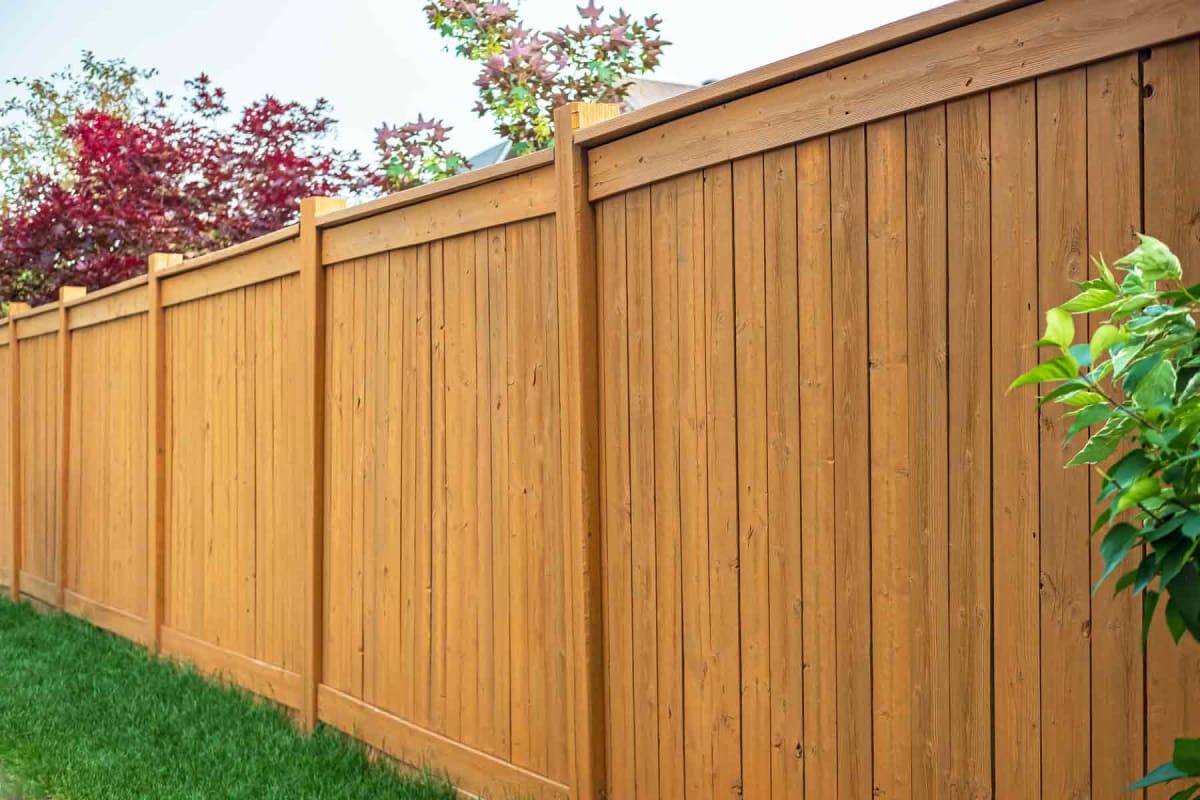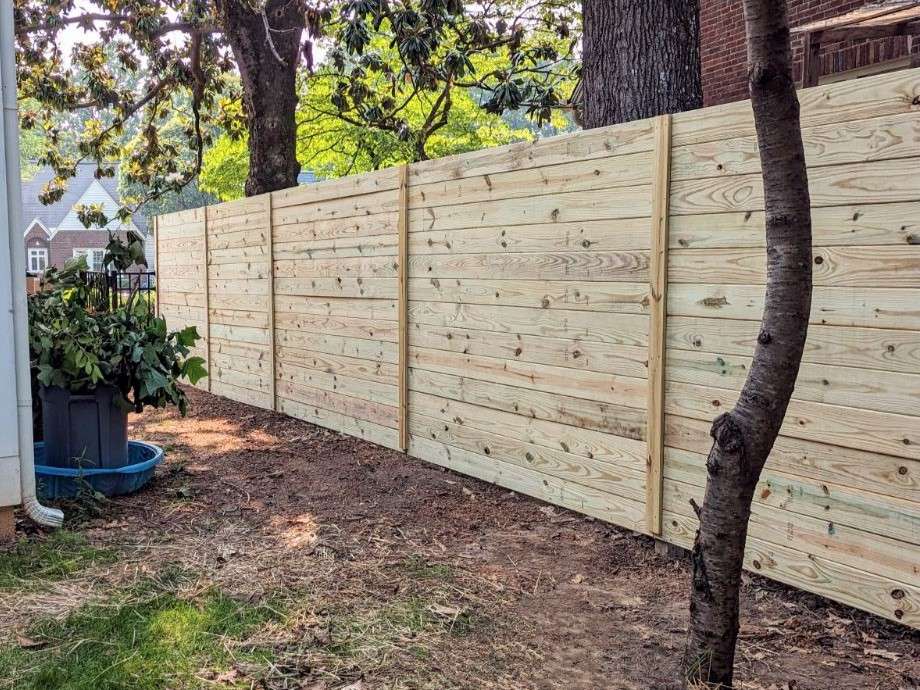All Categories
Featured
While normal maintenance can prolong the life of a fence, there are certain indications that show it's time to replace it. Here are the most typical indications that your fence may need to be replaced.
Additionally, any kind of splits, splits, or holes in the fencing should be resolved. A considerable quantity of busted slats, especially if the fence is wood, can lower both the durability and appearance of the structure. While tiny fractures might be repairable, large sections of the fencing might need to be changed entirely.
If rot has spread to a significant part of the fencing, repair services may just be a short-lived remedy. In such instances, changing the damaged parts or the entire fencing might be necessary to avoid further wear and tear and to make certain the security and security of the structure.
![]()
If the insect damages is extensive, repair work may not suffice, and replacing the affected fencing parts might be the most effective alternative. Fencings made from products like plastic or metal may be less prone to bugs, but timber is commonly one of the most prone.
For instance, wood fences may begin to splinter, warp, or fracture, while steel fencings might begin to corrosion or corrode. Vinyl fencings can blemish or establish fractures over time. If your fence is maturing and revealing several indications of wear, changing it can assist preserve your property's safety and security and appearance.
A new fence will certainly provide better longevity and decrease the requirement for ongoing repair services. Plus, it will enhance the total appearance of your building, which can raise its curb charm and worth.
While minor corrosion places can be treated and fixed, comprehensive corrosion that compromises the honesty of the fence is a clear sign that it requires to be replaced. If the rust has caused holes or weakened essential sections, changing the metal fence will prevent further damage and supply a safer, much more protected obstacle.
Newer fencing layouts and products are offered that deal higher sturdiness, improved security features, and a fresh appearance. A brand-new fencing can considerably enhance the overall appearance of your residential property and raise its worth.
Changing your fence with a model that matches your brand-new requirements will assist make certain that it offers the performance and security you expect.
![]()
Conclusion. A fence is an essential investment in the safety and look of your residential property. Normal inspection and upkeep can aid prolong the life of your fence, however inevitably, changing it when essential will certainly make certain that your property continues to be secure, exclusive, and aesthetically appealing for years to come.
- Architectural Damages. The key feature of a fencing is to supply safety and security and personal privacy, and any type of structural damages can endanger this purpose. Look for signs of drooping, leaning, or broken fencing articles.
Additionally, any kind of splits, splits, or holes in the fencing should be resolved. A considerable quantity of busted slats, especially if the fence is wood, can lower both the durability and appearance of the structure. While tiny fractures might be repairable, large sections of the fencing might need to be changed entirely.
- Decomposing or Degeneration (For Wooden Fences) Wooden fences are particularly vulnerable to wetness, which can bring about deteriorating over time. If you discover mushy or soft areas in the wood, or if you can see visible mold or fungus, this indicates significant degeneration. Decomposing is especially common near the base of the fence messages, where the timber touches with the ground.
If rot has spread to a significant part of the fencing, repair services may just be a short-lived remedy. In such instances, changing the damaged parts or the entire fencing might be necessary to avoid further wear and tear and to make certain the security and security of the structure.
- Pest Damage. Parasites, such as termites, woodworker ants, and rats, can damage wooden fences. Termites, in certain, can trigger considerable damage by tunneling with the wood, making the structure weak and unstable. If you see signs of an insect invasion, such as tiny openings, sawdust stacks, or the presence of pests, it's important to act quickly.

If the insect damages is extensive, repair work may not suffice, and replacing the affected fencing parts might be the most effective alternative. Fencings made from products like plastic or metal may be less prone to bugs, but timber is commonly one of the most prone.
- Age of the Fencing. The age of a fence plays a substantial role in its problem. A fence's lifespan normally varies from 10 to twenty years, depending upon the materials and the amount of maintenance it obtains. If your fencing is nearing the end of its expected life expectancy and has begun to show significant signs of wear, it might be time for a substitute.
For instance, wood fences may begin to splinter, warp, or fracture, while steel fencings might begin to corrosion or corrode. Vinyl fencings can blemish or establish fractures over time. If your fence is maturing and revealing several indications of wear, changing it can assist preserve your property's safety and security and appearance.
- Trouble in Upkeep. If you locate on your own often making fixings to your fencing, it might be an indication that the fencing is no longer in excellent problem. Frequently dealing with the same issues, such as changing damaged slats, loading holes, or restoring fractures, can be lengthy and pricey. Rather than continuing to restore an aging fencing, it may be extra cost-efficient over time to replace it completely.
A new fence will certainly provide better longevity and decrease the requirement for ongoing repair services. Plus, it will enhance the total appearance of your building, which can raise its curb charm and worth.
- Rust and Rust (For Metal Fences) Steel fences, consisting of chain-link, wrought iron, and light weight aluminum, are prone to corrosion and deterioration, especially in locations with high wetness or direct exposure to salt. Rust can gnaw at the material, leading and weakening the framework to safety and security issues.
While minor corrosion places can be treated and fixed, comprehensive corrosion that compromises the honesty of the fence is a clear sign that it requires to be replaced. If the rust has caused holes or weakened essential sections, changing the metal fence will prevent further damage and supply a safer, much more protected obstacle.
- Unattractive or obsolete Appearance. Sometimes, the need for a new fence is less concerning functionality and even more concerning appearances. Gradually, fencings can come to be weather-beaten, faded, or simply obsoleted. If your fencing no more enhances your building or meets your requirements-- whether for curb, security, or privacy allure-- it might be time for a replacement.
Newer fencing layouts and products are offered that deal higher sturdiness, improved security features, and a fresh appearance. A brand-new fencing can considerably enhance the overall appearance of your residential property and raise its worth.
- Fencing No Longer Offers Its Function. Fencings are commonly mounted with a particular function in mind, such as maintaining pet dogs in, offering privacy, or enhancing safety and security. If your demands alter, such as wanting even more privacy or much better security for animals or youngsters, it may be time to change the fencing with one that better serves your current demands.
Changing your fence with a model that matches your brand-new requirements will assist make certain that it offers the performance and security you expect.

Conclusion. A fence is an essential investment in the safety and look of your residential property. Normal inspection and upkeep can aid prolong the life of your fence, however inevitably, changing it when essential will certainly make certain that your property continues to be secure, exclusive, and aesthetically appealing for years to come.
Latest Posts
Explore Brake Repair & More: Full Auto Care Solutions from Montclare Auto Repair
Published en
1 min read
Why Consistent Auto Maintenance at Montclare Auto Repair Keeps Your Wallet Happy
Published en
1 min read
Unlock Your Financial Partner at WyHy – Top Benefits for Your Money Goals
Published en
1 min read
More
Latest Posts
Explore Brake Repair & More: Full Auto Care Solutions from Montclare Auto Repair
Published May 29, 25
1 min read
Why Consistent Auto Maintenance at Montclare Auto Repair Keeps Your Wallet Happy
Published May 28, 25
1 min read
Unlock Your Financial Partner at WyHy – Top Benefits for Your Money Goals
Published May 25, 25
1 min read